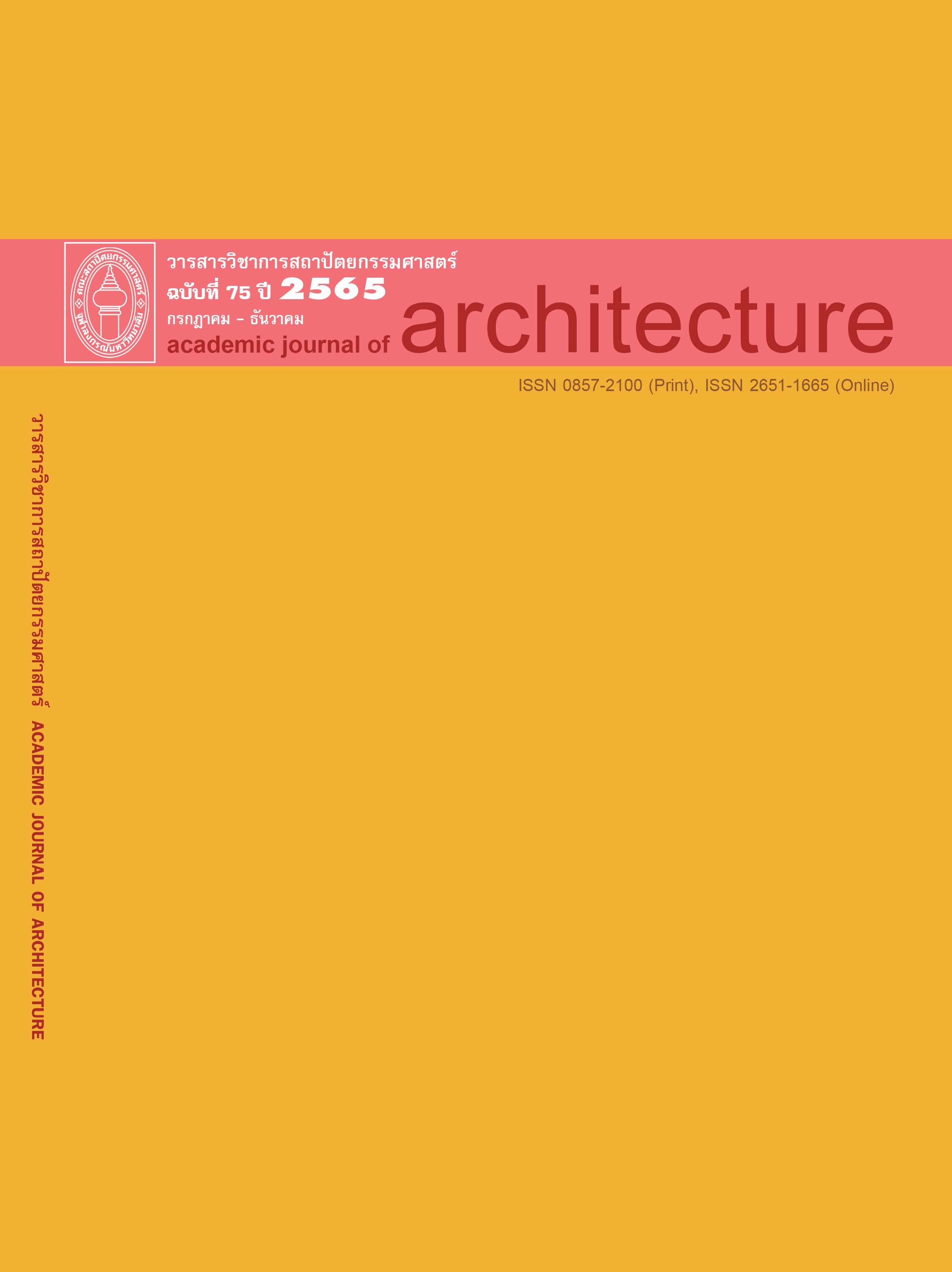Kalpana Phra Tumnak (Royal Residence Endowment) in Early Rattanakosin period from an Architectural Conservation Perspective.
Main Article Content
Abstract
Kalpana Ruen (House Endowment) is a long-standing tradition that has been practiced by Thais of all social classes, due to the belief in the concept of rebirth derived from Buddhism, Brahmanism and animism. Consequently, Kalpana Ruen for public interest is considered a way to make merit for the deceased owner of the house. This research aims to shed light on a “Kalpana Phra Tumnak (royal residence endowment)”, which was practiced among royalty in the early Rattanakosin period and has resulted in all the royal residences being changed function and relocated from the Grand Palace to other places according to each king’s consent in three different instances: 1) “Tuek Royal Residence” was endowed to Wat Rachada Thisatan, 2) “Green Royal Residence” was endowed to Wat Ammarinthararam and 3) “The Complex of Red Royal Residences”, found three: one Red Royal Residence and Moon Monthian Palace both located at Wat Khemapirataram and the other Red Royal Residence, which relocated to National Museum. Furthermore, as soon as the endowment was performed, the ownership of the residence would fall on the recipient immediately.
The research methodology reviewed the relevant literature. Field trips and photogrammetry the case studies. To be attributed to the data reviewed for the architectural drawing in the comparative analysis.
The findings of this research suggest that Kalpana Ruen is “a type of architectural conservation exclusive to Thailand” which emphasize more on the spiritual value rather than merely maintaining the physical heritage. Relocating to a new use through charitable contribution ideas Consider the new location from being a temple patronized by the former owner. Adapting function from size and hierarchical ornamentations by keeping the symbols related to the hierarchy and identity of the building, resulting in the roof and the house having well-preserved. On the other hand often add usability in the basement for a new function. As a result, the former Ruen is still used.
Article Details
References
Rūambunyai "būrana" Sālāčhamlakmai Nưngrō̜ihāsip Pī Mō̜radok "nưngdīao" Naisiam. Prachāchātthurakit, 17 October 2012.
Brand, Stewart. (1995). How buildings learn. London: Penguin Putnam.
Damrong Rajanubhab. (2010). Tamnān wang kao (7th ed.). Bangkok: Saengdao Book.
Douglas, James. (2006). Building adaptation. Oxfordshire: Routledge.
Fine Arts Department. [n.d.]. Wat Ratdāthitthān. Retrieved December 20, 2021, from https://gis.finearts.go.th/fineart/
ICOMOS Thailand. [n.d.]. Thailand charter. Retrieved May 27, 2021, from https://www.icomosthai.org/THcharter/63546_Charter_updated.pdf
Nangnoi Saksri. (1998). Rư̄an lūang. Bangkok: Muang Boran.
Pinraj Khanjanusthiti. (2004, January). Philosophical approach to conversation of Buddhist monastery in Thailand, Bangkok. Manusya, 96-109.
Pinraj Khanjanusthiti. (2009). Kānʻanurak mō̜radok sathāpattayakam læ chumchon. Bangkok: Chulalongkorn University Printing House.
Pitchaya Soomjinda. (2012). Rāt pradittha phiphit thō̜ra rotsanā. Bangkok: Wat Ratchapradit Sathit Mahasimaram.
Sathiankoset. (1971). Plūk rư̄an - tǣngngān praphēnī kīeokap chīwit (2nd ed.). Bangkok: samnakphim samākhom sangkhommasāt.
Sirisarn Mueanphothong. (2009). Monastic endowments in the Sukhothai, Ayutthaya and Thonburi-Rattanakosin inscriptions. (Master’s Thesis, Silpakorn University).
Somkid Jirathutsanakul. (2001). Wat: phut sātsana sathāpattayakam Thai. Bangkok: Thammasat University Printing House.
UNESCO. [n.d.]. The Nara document on authenticity. Retrieved January 20, 2021, from https://whc.unesco.org › document
Wikipedia. [n.d.]. Phra Tamnak Dǣng. Retrieved December 20, 2021, from https://th.wikipedia.org/wiki/พระตำหนักแดง
Worrasit Tantinapatkul. (2007, September). Amnāt rat nư̄a thīwat: Sing thī hāi pai čhāk sangkhom Thai. NAJUA: History of Architecture and Thai Architecture, 5, 86-95.


